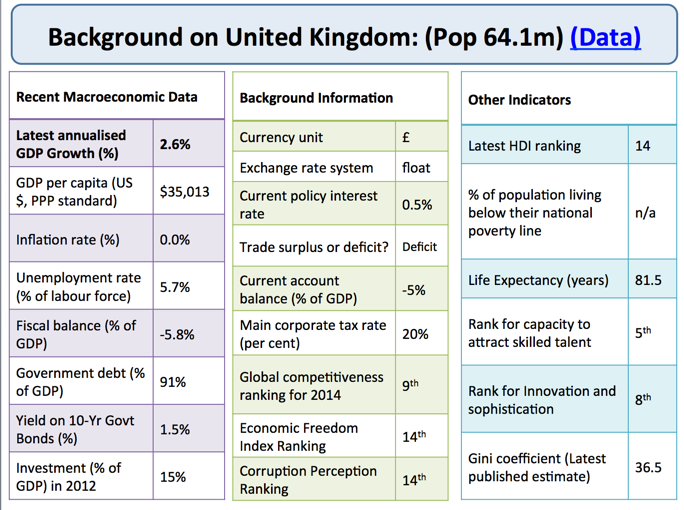Ten Structural Problems Facing the UK Economy
Tuesday 28 April, 2015 Written by Geoff Riley
We recently came accross this aritcle on the: tutor2U website by Geoff Riley.
tutor2u is the Online Educational Publisher they provide a comprehensive range of support resources and services to teachers, students, parents and other educational communities
This list certainly puts into perspective what is happening in the economy.
Low business investment - capital spending as a share of GDP has fallen from around 20% in 2007 to less than 15% today. The government has a national infrastructure plan but the time lags involved in getting major projects up and running are long. The commercial banking system remains reluctant to finance the expansion plans of many small and medium-sized businesses. Low investment is a factor behind the next structural problem. Research and development remains persistently below 2% of GDP.
Weak productivity growth - output per person employed has slumped in the UK and remains well below what would might have been expected more than five years into the recovery. There are many competing explanations for low productivity growth in the UK (referred to in some articles as the "UK productivity puzzle")
Structural unemployment - there has been a welcome and sustained fall in UK unemployment (currently 5.7% of the labour force), but deep-seated structural problems remain. More than 30% of those unemployed have been out of work for at least a year. Youth unemployment remains high and there are wide variations in regional unemployment / job opportunities across the regions of Britain.
Structural decline in manufacturing - George Osborne wanted the present recovery to be a "march of the makers" but the evidence points to a weak rebound in manufacturing production, investment and jobs despite some notable successes such as car assembly in the UK. Britain continues to be heavily reliant on financial services.
Structural trade deficit - the UK ran one of the largest current account deficits on record last year - the gap was more than 5% of GDP in 2014. Export growth in the recovery has been disappointing despite the UK enjoying a more competitive exchange rate.
Structural fiscal deficit - the Coalition government has found it difficult to cut the size of the cyclically-adjusted budget deficit which remains above 5% of GDP. Weaker than expected tax revenues are a key part of the explanation, but a high budget deficit means that the national debt continues to rise in absolute terms and also as a share of GDP.
Structural lack of competition in many markets - monopoly power in utilities such as electricity and gas has remained a topical economic and political issue. Fuel bills have been slow to declined despite the collapse int the world price of oil. A lack of real competition keeps prices high and affects the real incomes of millions of consumers, especially those on tight budgets.
Structural inequality - one of the most important issues facing the UK at the moment. Real wages have been declining for a huge number of people; the real interest rates for pensioners reliant in savings have been negative. Executive pay continues to outpace the growth of average earnings by a huge amount.
Structural problems in the housing market - the chronic under-supply of housing to buy and to rent is a major barrier to labour mobility. Why is the British economy unwilling/unable to make decisive progress in improving and expanding the housing stock?
Structural under-funding of public services - economic, social and demographic pressures continue to mount on public services such as the NHS. Some economists argue that the NHS needs a major injection of extra funding over the next 5-10 years; others believe that there are many £ billions of savings still to be achieved by addressing inefficiencies in public health care.

Leave a comment
Make sure you enter all the required information, indicated by an asterisk (*). HTML code is not allowed.
Join
FREE
Here










